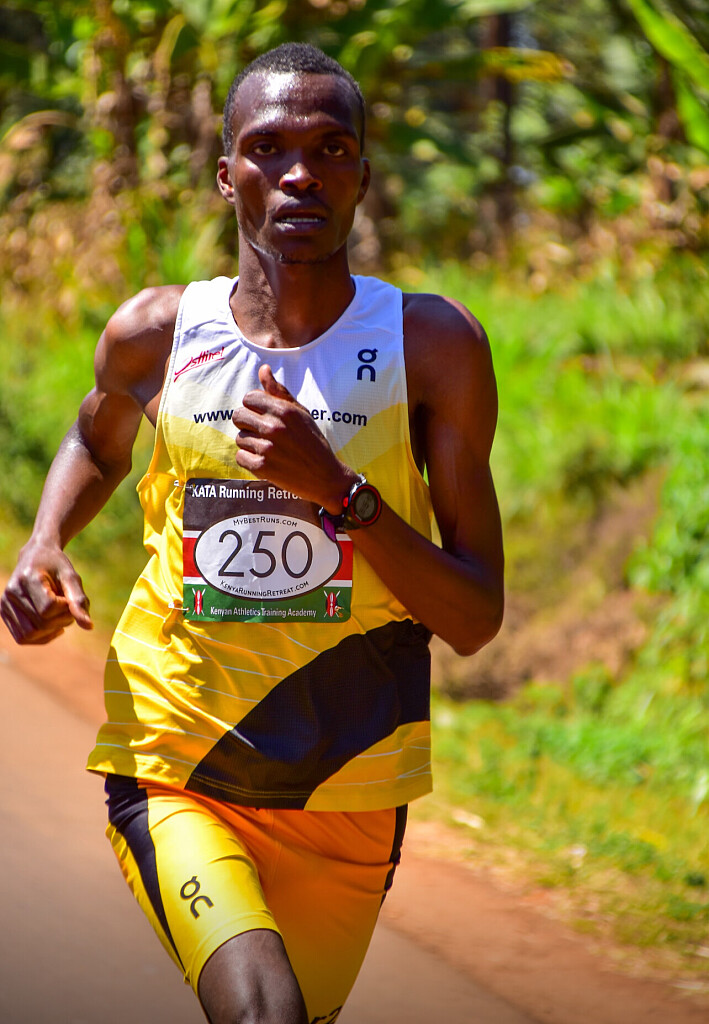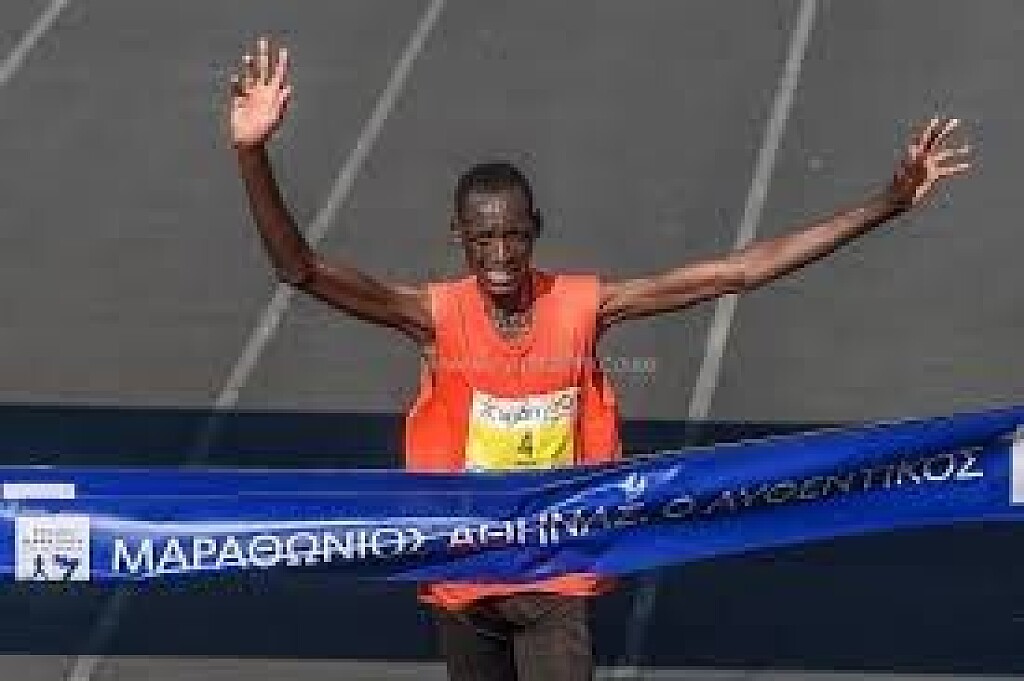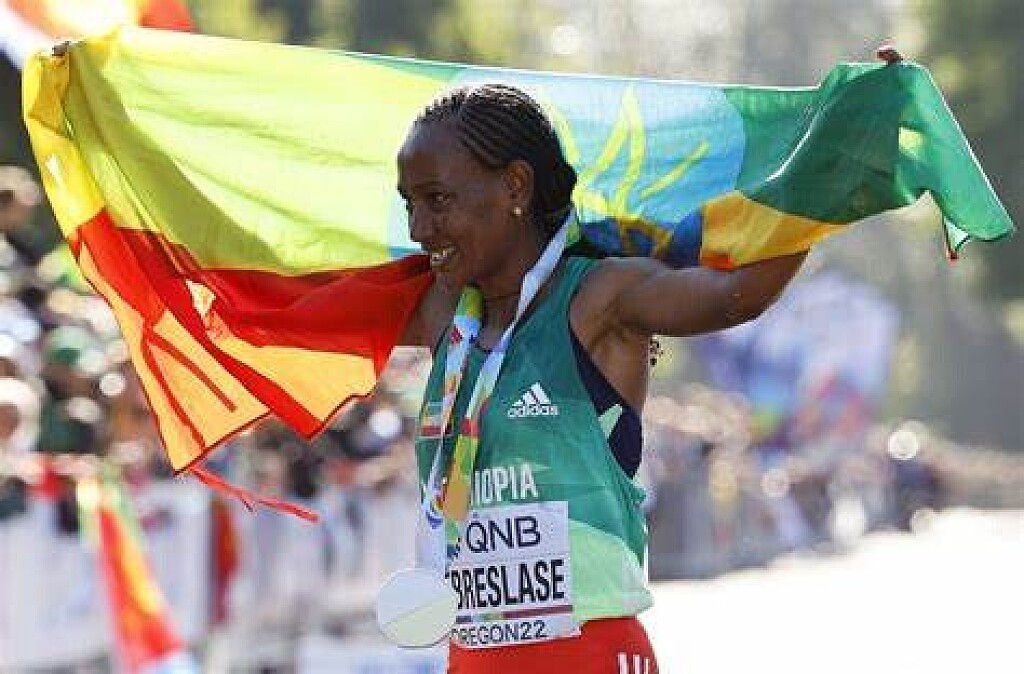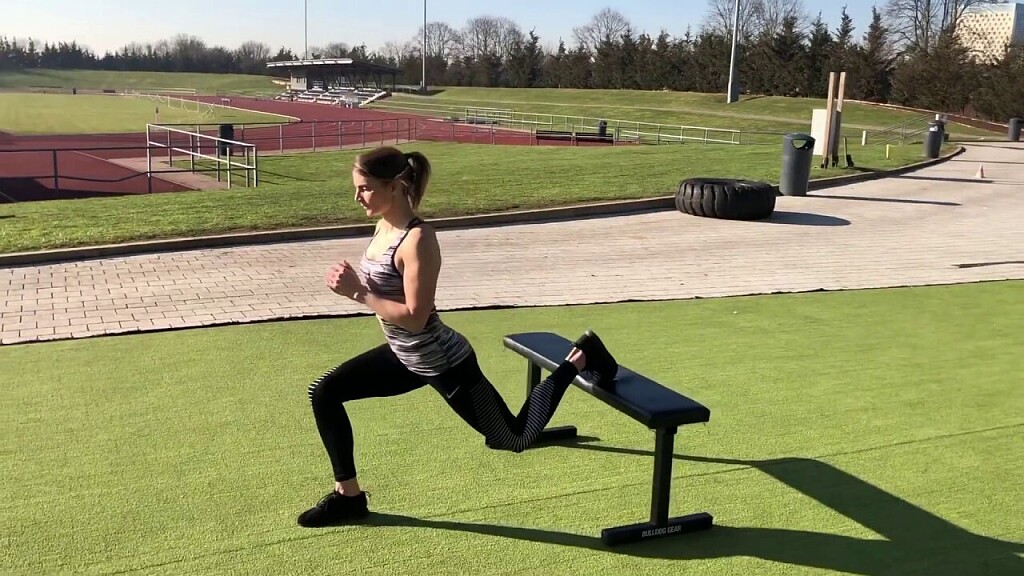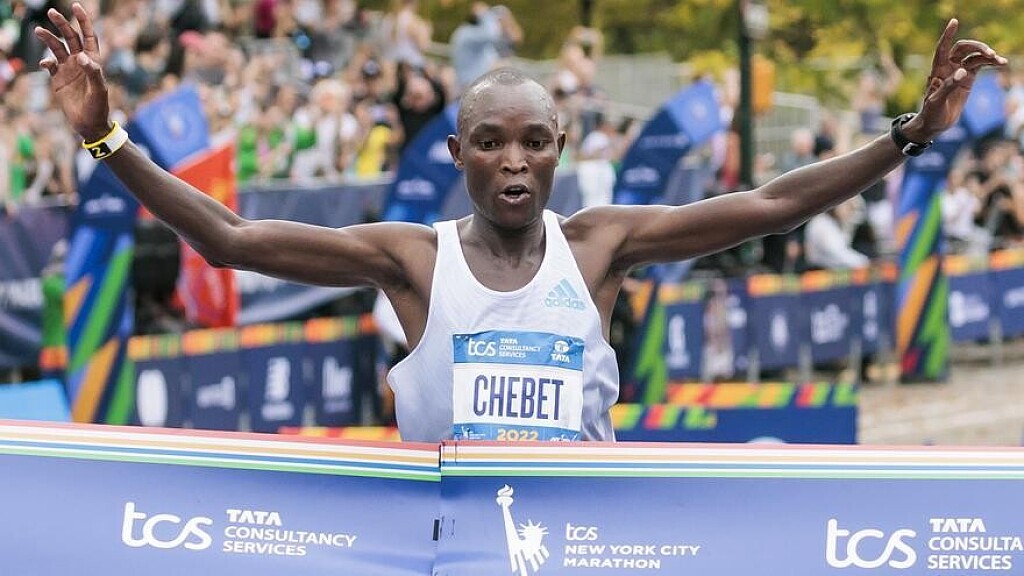Running News Daily
Top Ten Stories of the Week
9/21/2024
These are the top ten stories based on views over the last week.
Kenyan’s Shadrack Kenduiywo breaks the nine year old world record for the Double 15k
The sport of Double Racing was created by Bob Anderson in October 2010. The sport, governed by the Double Road Race Federation (DRRF) is a two leg race with an established break between the legs.
The featured event is the Double 15k. The first leg is 10k. The second leg is 5k The second leg starts one hour and 45 minutes after the start of first leg. Times from the two legs are added together for scoring. You must complete both legs to get an official time.
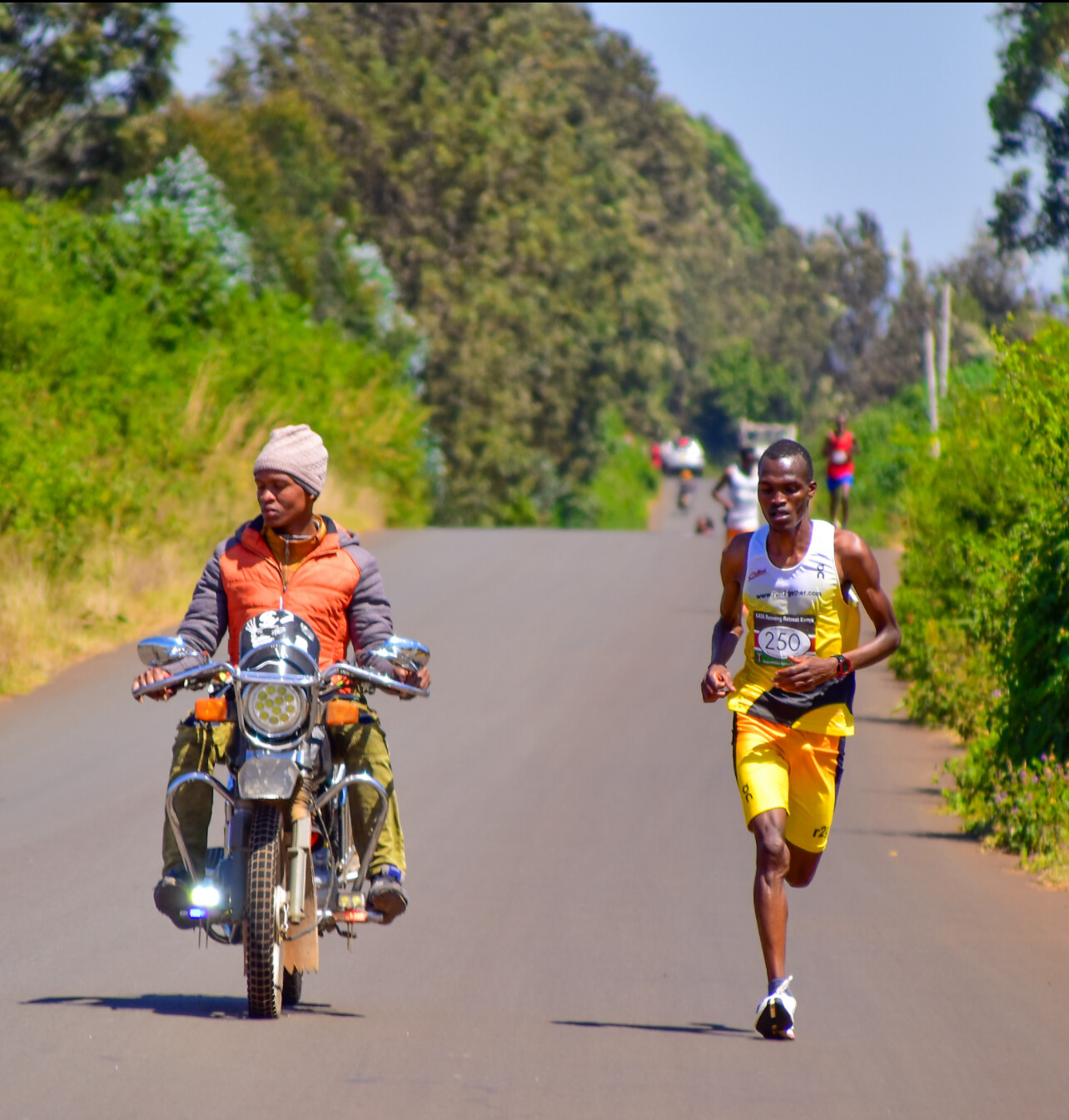
Over 120 Double 15k races have been held around the world. On May 10, 2015 Julius Koskei from Kenya broke his own world record clocking 43:11 in Pacific Grove California USA. He clocked 29:11 for his 10k leg and 14:00 for his 5k leg.
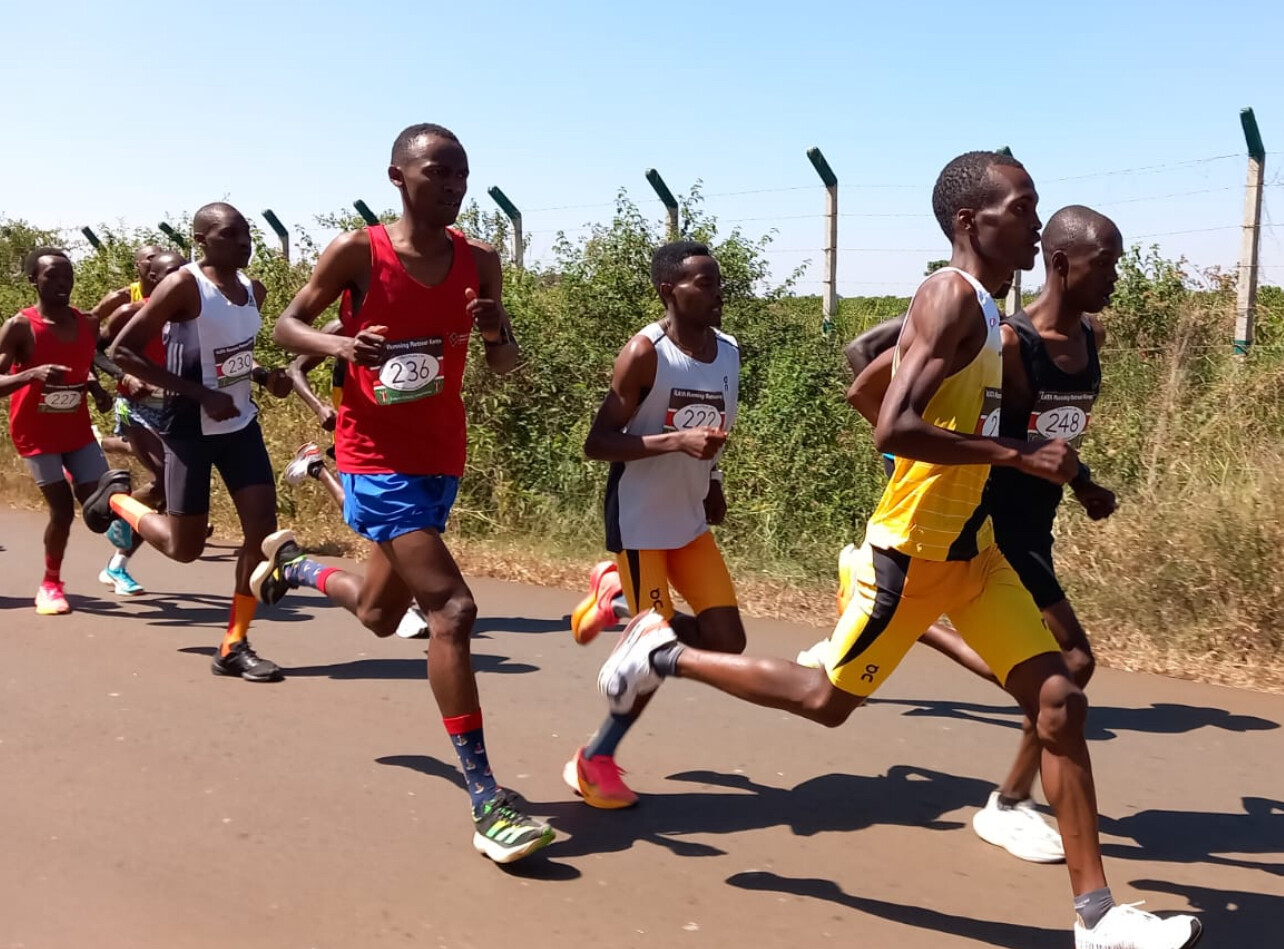
That record held for nine years and a few months. On September 14, 2024 that record was not only broken but it was smashed at the fourth annual KATA (Kenyan Athletics Training Academy) Double Road Race 15k. KATA Kenya is located in Thika. The second KATA is located in Central Portugal and is opening officially Oct 19, 2024. "We train the Kenyan Way at both locations," says owner/director Bob Anderson.
24-year-old Shadrack Kenduiywo clocked 42:42 taking 29 seconds off the record. He attacked the record right from the start clocking 28:33 for the 10k leg.
He told us after the race, "This was my first double race and I was happy. My 10k leg was close to my best time this year so I knew the record was in sight. I had ran 28:18 in march in kapsabet betika and I was happy for this start today."
He told us he was in top form and that he lead from the second kilometer. His splits: 2:52, 2:50, 2:57, 2:59, 2:57, 2:47, 2:41, 2:45, 2:55 and 2:50.
We asked him what he did during the break. "During the break," he said "i just relax, drink water ate some fruits and then did a warm up of 20 minutes before the second leg."
His splits for the second leg were 2:47, 2:48, 2:51, 2:47, and 2:44.
After clocking the best time ever he said, "Yes if the weather could have cooler, i could have ran faster." It was about 21c (71 F) at the start.
We wanted to know a little more about Shadrack and he wrote, "In the half marathon, I have a personal best of 61:24 this year Italy padova, 25 km Berlin 1h15, 8km 23:43 and 5km 13:55 in Udeni."
The new world record holder says, "i hope to ran faster than this next time. I will train next time focusing for it."
Shadrack was followed by Martin mumo who clocked 43:18 which is the third best time ever. Only Shadrack and Julius Koskei have run faster.
KATA's Zachary kirika finished in third place clocking 43:37 which is the fourth best time ever. Very impressive considering the heat and he was unwell.
Alice koigi took the crown in the women's race in a time of 49:30. She was followed by Monica wanjiku who posted 51:30 and Susan njuu stopped the clock at 53:07 which was good enough for third place.
In addition to the Double race, nearly 100 kids ran the Bob Anderson's Kids Mile. 12-year-old Benjamin ndaro clocked 4:54 with John Mwangi close behind clocking 4:59. There was also a 5k for kids and 16-year-old Denis chege won in 17:48.
Men's Double 15k Results
1. Shadrack Kenduiywo 24yrs Bib no. 250 10km 28.33mns 5km 14:01m Total time 42:42
2. Martin Mumo 26yrs Bib no. 222 10km 28:56, 5km 14:22, Total time 43:18
3. Zachariah Kereka 22yrs, Bib no. 236, 10km 29:13, 5km 14:24, Total time 43:37
4. Collins Kiplagat 18yrs, Bib no. 249, 10km 29:53, 5km 14:46, Total time 44:39
5. John Njuguna 25yrs, Bib no. 226, 10km 30:18, 5km 14:53, total time 45:11
6. Hillary Komen, 30yrs, Bib no. 242, 10km 30:19, 5km 14:57, Total time 45:16
7. Michael Chege, 18, 218, 30:37, 15:01, 45:38
8. Kenneth Gichoya, 27, 211, 30.51, 15.28, 46:19
9. Joshua Kibet, 27, 248, 30.53, 15.30, 46.23
10. Gabriel Kahura, 41, 219, 30.54, 15.34, 46.28
11. Fredrick Kiprotich, 24, 238, 30.56, 15.35, 46.31
12. Charles Mwangi, 17, 229, 31.34, 15.42, 47.16
13. Peter Wanyoike, 27, 230, 31.43, 15.45, 47.28
14. Boniface Mungai, 26, 227, 31.45, 15.48, 47.33
15. Shadrack Kiprotich, 26, 247, 31.49, 16:14 48:03
16. John Kuria 39 245 32.07 16.31 48.38
17. David Muriuki 38 209 32.42 16.36 49.18
18. Amos Chirchir 240 24 33.14 17.14 50.28
19. Alfred Kamande 24 000 33.16 17.24 50.40
20. Lewis Kamau 36 000 34.13 17.31 51.44
21. Lawrence Matheka 27 244 34.34 18.11 52.45
22. William Mbugua 21 212 34.56 18.40 53.36
23. Fredrick Mwenda 18 241 37.35 19.29 57.04
24. Jonathan Kyallo 18 481 37.36 20.46 50.22
25. Namisi Elias 17 000 39.32 21.07 60.39
26. Peter Musembi 17 467 41.14 21.53 63.07
27. Jeff Maina 15 489 43.32 23.00 66.32
28. Bernard Makuto 18 411 44.17 23.10 67.27
29. Joseph Muchai 16 358 44.18 23.11 67.29
30. Francis Muinde 17 468 45.02 23.14 68.16
31. Anthony Muthanga 17 332 45.21 23.58 69:19
32. Harrison Mwangi 20 228 45.22 24.10 69.32
33. William Joseph 18 299 45.25 26.20 71.45
34. James Garang' 17 500 45.38 28.11 73.49
35. Bruno John 17 499 46.24 28.11 74.35
36. Simon Mogere 16 497 47.08 29.00 76.17
37. Samson Mbugua 17 493 49.08 32.00 81.08
38. John Kamau 16 465 49.25 33.10 82.35
39. Gerrishon Ngugi 18 397 51.32 34.11 85.43
40. Maurice Kinyua 18 412 51.33 36.10 87.43
Men masters
1. Charles ndirangu 64 246 37:37 18:58 56:21
2. David mwangi 70 289 42:36 22:13 64:49
3. Joseph kiraio 72 235 45:39 28:01 73:40
Women
1 Alice koigi 33 223 33:24 16:36 49:30
2 Monica wanjiku 22 225 34:26 17:24 51:30
3 Susan njuu 36 217 35:31 17:36 53:07
4 Virginia wanjiru 22 221 36:58 17:52 54:50
5 Lois wambui 23 214 36:18 17:56 54:14
6 Cynthia chacele 24 216 36:42 17:40 54:22
7 Jacinta kamau 22 213 36:24 18:31 54:55
8 Karen chepkemoi 22 220 37:59 18:26 56:25
9 Lilian nyamai 23 215 39:54 19:47 59:41
10 Ruth maina 22 232 42:07 20:11 63:22
11 Karen kirwa 23 208 43:12 22:38 65:50
12 Lucy muritu 39 243 47:07 24:25 71:32
Women masters
1 Julia njari 47 224 40:32 20:11 60:43
2 Sheila mbaku 54 233 41:32 20:58 62:30
3 pennina mugure 53 234 47:49 23:51 71:40
(09/15/24) Views: 264Edesa and Misoi break course records at Sydney Marathon
Ethiopia’s Workenesh Edesa and Kenya’s Brimin Misoi made significant improvements on the course records at the TCS Sydney Marathon, winning the World Athletics Platinum Label road race in 2:21:40 and 2:06:17 respectively.
Edesa took almost three minutes off the previous course record in a race where the top four women finished inside Stella Barsosio’s former mark of 2:24:33, set five years ago.

A group of seven women ran together through the first 10km in 33:44, putting them on course record pace from the outset. Just four women – Edesa, Valary Jemeli Aiyabei, Ruti Aga and 2022 world champion Gotytom Gebreslase – remained in the lead pack as the half-way point was reached in 1:11:11.
The quartet ran together for another six or seven kilometres before Edesa and Aga made a break. The Ethiopian duo reached 30km in 1:41:16 with a 16-second lead over Gebreslase. Aga was next to fade, leaving Edesa as the sole leader.
The Ethiopian had a 22-second lead at 35km and was picking up the pace as the race went on. She reached the finish line in 2:21:40, 89 seconds ahead of Aga. Gebreslase completed the Ethiopian sweep in third with 2:24:16.
The men’s race set out at a steady pace with a large lead pack going through 10km in 29:58, inside course record schedule. By the time the half-way point was reached in 1:03:13, just four men remained in the lead group – Misoi, Geoffrey Toroitich, Ezra Tanui and Chalu Deso Gelmisa – while four or five other runners were strung out behind.
By 30km, reached in 1:29:49, Leul Gebresilase had joined the leaders to form a quintent, but they only ran together for a few kilometres before Misoi forged on ahead. The Kenyan got to 35km in 1:44:41, still comfortably inside course record pace, with a 53-second lead over Kirwa. Tanui and Toroitich, meanwhile, dropped out.
He continued to extend his lead through the closing stages and reached the finish line in 2:06:17, taking 46 seconds off the course record set two years ago by compatriot Moses Kibet. Gelmisa was a distant runner-up in 2:08:01, just ahead of Kirwa (2:08:17).
(09/15/24) Views: 204Ingebrigtsen set to make half-marathon debut two days after 1,500m win at Brussels Diamond League
Jakob Ingebrigtsen is set to make his half-marathon debut in Copenhagen on Sunday after racing to victory in the 1,500-meters event at the Brussels Diamond League final on Friday evening.
The 21-kilometer race, organized by Copenhagen Half Marathon, will conclude a brilliant season for the 23-year-old who won gold in the 5,000m at the Paris 2024 Olympics.
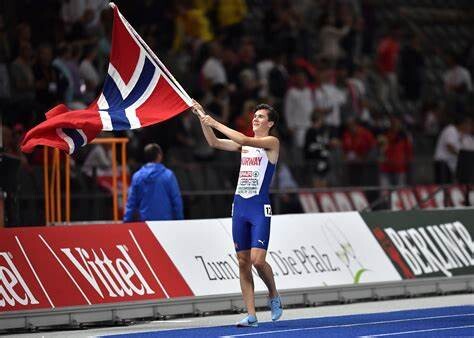
He had hinted at the news on social media two days ago, after racing to his third consecutive Diamond League final victory in the 1,500m, writing “What a great way to end the season… or?”
Ingebrigtsen will find himself in a field that includes world record-holder Jacob Kiplimo and world champion Sabastian Sawe.

“I’m looking forward to test myself in the half marathon, for the first time, in Copenhagen,” Ingebrigtsen said on the organisers’ website.
“Normally this is a distance that would suit my training very well, but after a long season on the track working towards the 1500m, it’s exciting to see if I even can reach the finish line,” said Ingebrigtsen.
(09/14/24) Views: 176Sportstart
Jakob Ingebrigtsen considering competing at Sunday’s Copenhagen Half Marathon
It’s no secret that Norwegian distance running star Jakob Ingebrigtsen is on a mission to etch his name into the history books by setting as many world records as possible in his career. On Thursday, rumours began swirling on social media that Ingebrigtsen was competing at the Copenhagen Half Marathon on Sunday, marking what would be his debut at the distance. Should he decide to race, the world record of 57 minutes and 31 seconds could be in jeopardy.
On the Copenhagen Half Marathon start list, there is an unnamed athlete with bib number #2 who is the same age as Ingebrigtsen (23).

In a press conference ahead of Friday’s Diamond League Final in Brussels, Ingebrigtsen was asked if he had plans to compete in Copenhagen. “I’m focused on tomorrow’s race first, and what happens after that, I’m not sure,” the 23-year-old Norwegian responded, keeping the speculation alive. If the rumours prove true, he could be chasing another world record.
In tomorrow’s race in Brussels, Ingebrigtsen will be vying for his third-consecutive Diamond League title while trying to inch closer to Hicham El Guerrouj’s 1,500m world record of 3:26.00. “I believe it’s possible to break any world record,” Ingebrigtsen said in Thursday’s press conference. “For me, it’s about winning. It’s always exciting to race when there’s something bigger on the line. There’s always the chance of a world record, but likely not tomorrow.”
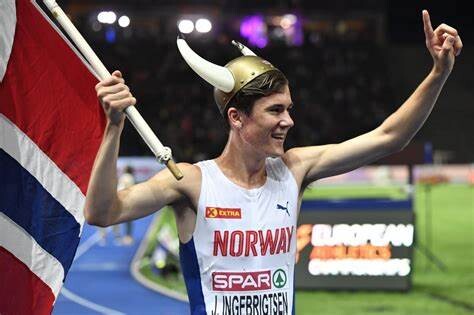
World record watch in Brussels
Meanwhile, the Diamond League Final could witness another world record in the men’s 800m, where Canadian Olympic silver medalist Marco Arop will face off against his rival, Olympic champion Emmanuel Wanyonyi. Both are the fastest 800m runners in the world this year, and they’ll be chasing David Rudisha’s world record time of 1:40.91. Arop will arrive in Brussels in record-setting shape, fresh off setting a North American record in the 1,000m at the Boris Hanžeković Memorial in Zagreb on Sept. 8.
(09/13/24) Views: 166
Marley Dickinson
Sydney Marathon looks likely to become seventh World Marathon Major
World Marathon Majors will add a seventh race to its elite series if all goes well at the biggest marathon field assembled in Australia to race 42 kilometres across the streets of Sydney on Sunday.
If the Sydney Marathon meets the WMM requirements for the second year in a row, it will join the ranks of long-staRace director Wayne Larden declared: “We’re prepared, we’re ready. All of our plans look good on paper, I feel we’re ticking all the boxes. So we’ve just got to go out there now and deliver the event as per the plans and I’m sure we’ll meet the criteria.”
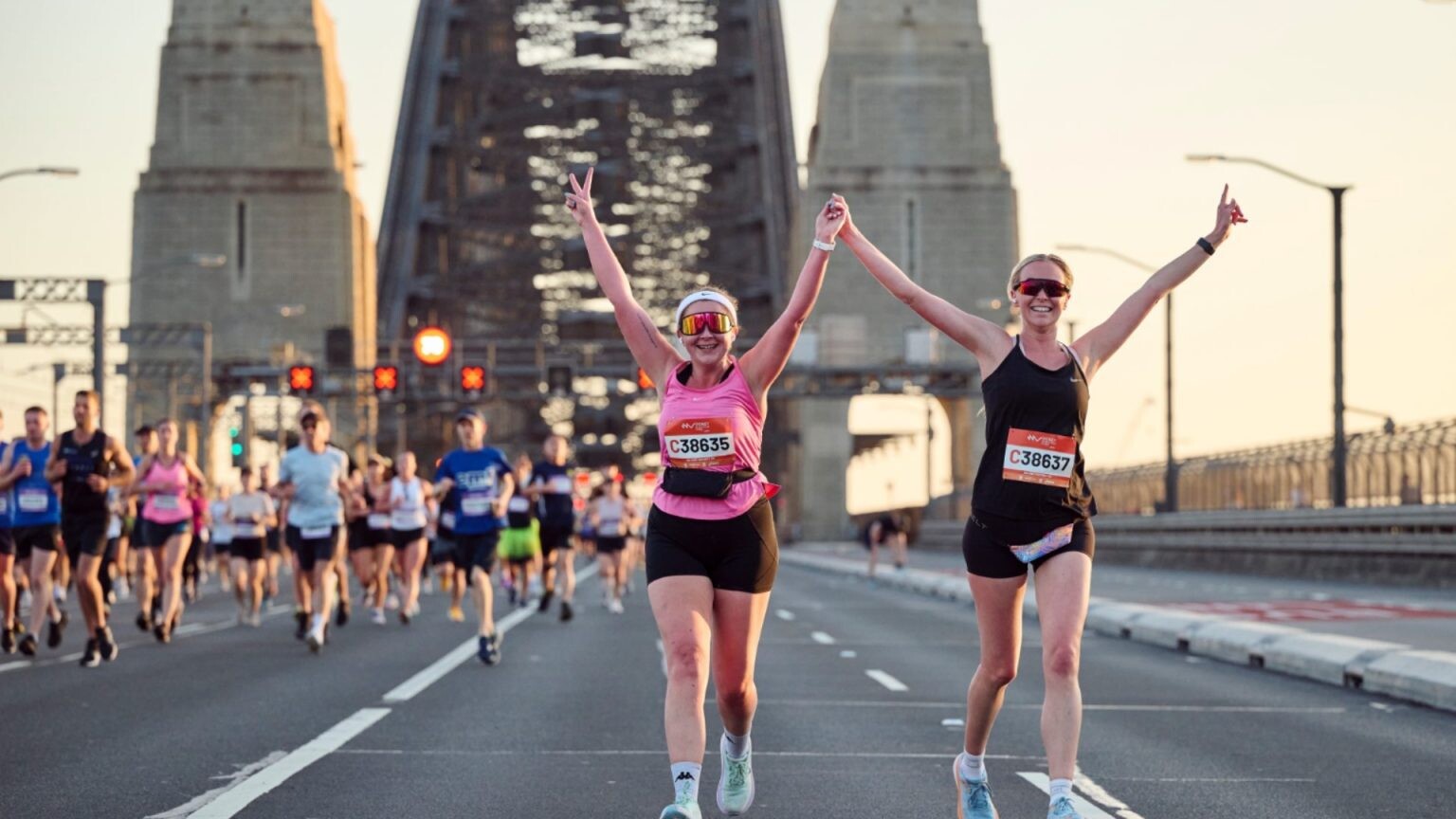
Larden has been the event director since 2005, when there were 2,300 finishers. Since then, he has let the number of runners grow to 25,000, who will compete on a course that has been redesigned. He added: “It’s taken me 18 years to build it to 5,000 and two years to get it to 25,000… So the trajectory has been very steep in the last two years since we became a candidate race, because there’s a lot of excitement about the world majors being in Sydney.”
With the field so large and the new start location—North Sydney Oval, the site of the 2000 Olympic marathon—the goal may be a little more challenging for Larden and his team, but he is optimistic they can pull it off.
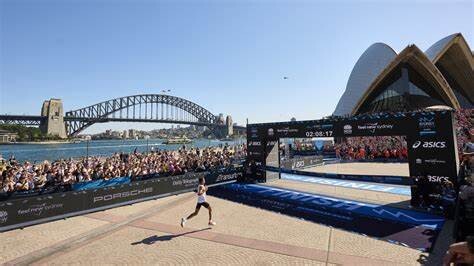
“I’m feeling confident, but it’s a big event and anything can happen. But I think we’re well prepared for it… I will pretty well know on race day how we’ve gone, based on our plans and how we’ve delivered them,” Larden remarked.ndiLondon, Boston, Berlin, and Chicago, becoming the first to do since Tokyo in 2013.
(09/14/24) Views: 128CNA
Global medalists Gebreslase and Gebresilase head Sydney Marathon fields
Ethiopia’s 2022 world champion Gotytom Gebreslase and her compatriot Leul Gebresilase, the 2023 world bronze medalist, feature in the fields for the TCS Sydney Marathon presented by ASICS, a World Athletics Platinum Label road race, on Sunday (15).
Gebreslase is a two-time world marathon medalist, having added silver in Budapest to the gold she gained in Oregon, while she won the Berlin Marathon in 2021 and finished third in the New York and Tokyo marathons in 2022.
The 29-year-old ran her PB of 2:18:11 in Oregon and 2:18:18 in Tokyo, and earlier this year she clocked 2:21:19 to finish third in Hamburg.
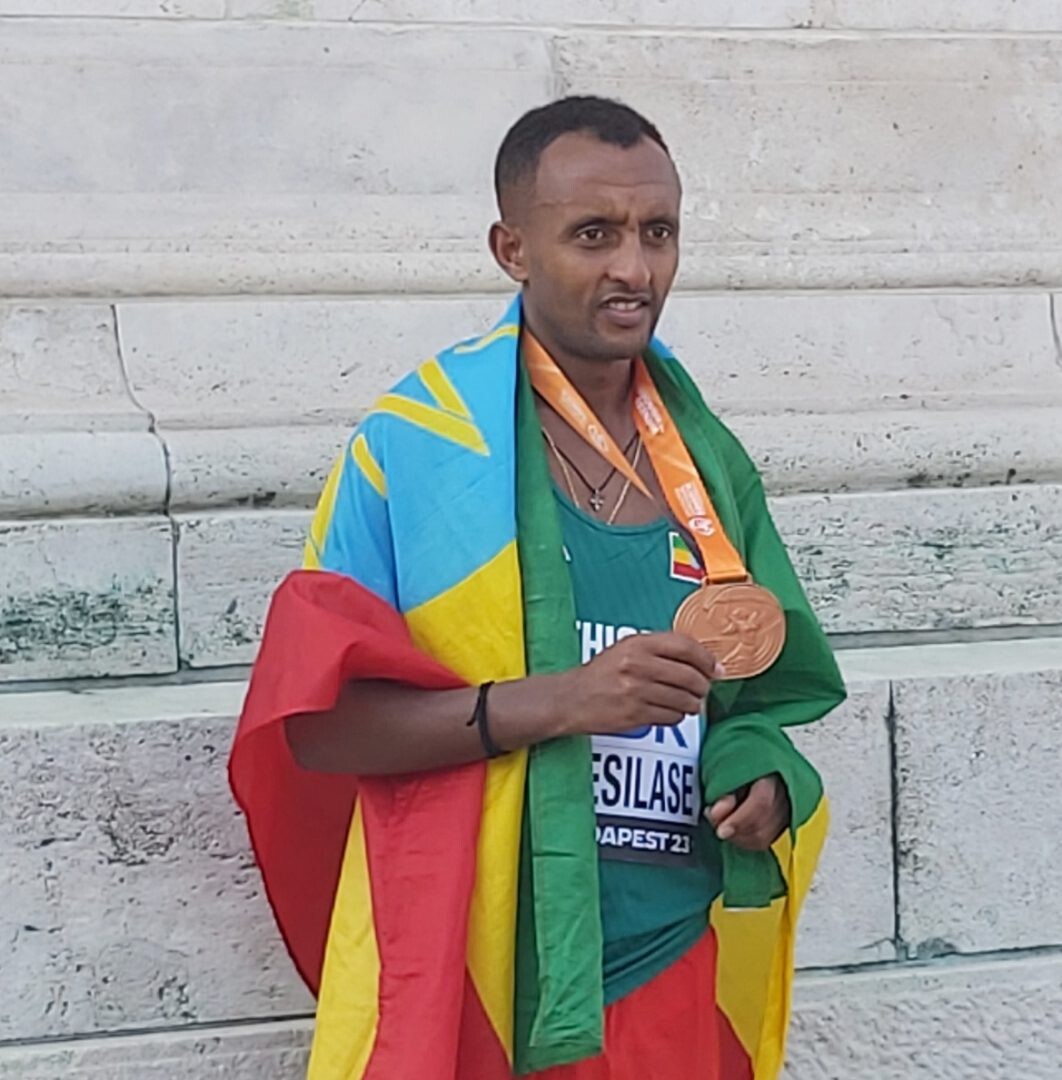
But Gebreslase is set to face a strong challenge, with four other sub-2:20 runners on the entry list. Her compatriot Tadu Teshome is fastest of them all with the PB of 2:17:36 she set when finishing fourth in Valencia in 2022. In 2023 she raced three marathons, finishing fifth in Chicago, sixth in Shanghai and eighth in London. In June she set a 10km PB of 31:13 in Durban.
Joining them are Ethiopia’s Ruti Aga and Buzunesh Getachew, plus Kenya’s Judith Jeptum Korir, who secured world silver behind Gebreslase in Oregon two years ago.
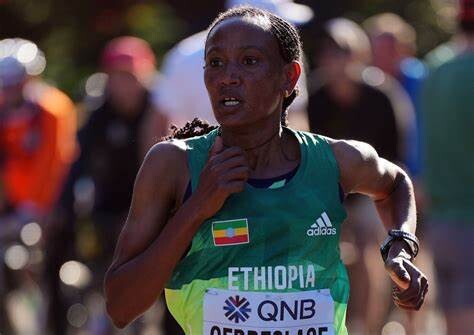
Aga won the Tokyo Marathon in 2019 and more recently finished second in Dubai in January in a PB-equaling 2:18:09 and first in Daegu in 2:21:07. Getachew set her PB of 2:19:27 when winning in Frankfurt last October, while Korir’s career best is the 2:18:20 she ran in Oregon. She went on to finish fourth in the London Marathon that year in 2:18:43 but did not finish when racing the Boston Marathon earlier this year.
Also entered are Kenya’s Viola Kibiwot, Sharon Chelimo and Beatrice Cheptoo, plus Japan’s Mao Uesugi.
Gebresilase is the fastest in the men’s field, thanks to the PB of 2:04:02 he set in Dubai in 2018. Since then he has become a global medallist, getting bronze in Budapest in 2023, the same year in which he finished fourth in the London Marathon. He ran 1:01:24 for the half marathon in Ras Al Khaimah in February but did not finish on his return to London in April.
In Sydney he faces three other sub-2:05 runners and another seven who have dipped under 2:08. His compatriot Chalu Deso is a strong contender, as he ran 2:04:53 in Valencia in 2020 and more recently won the Tokyo Marathon in March last year in 2:05:22. He raced the Paris Marathon in April, clocking 2:07:39.
Ethiopia’s Haftu Teklu ran 2:04:42 when finishing fifth in Berlin last year, while Kenya’s Brimin Kipkorir Misoi won the Frankfurt Marathon last October in a PB of 2:04:53.
They will line up alongside Ethiopia’s Tafese Delelegn and Tadu Abate, who finished third in Berlin in 2022, plus Kenya’s Laban Korir, Reuben Kerio and Michael Mugo Githae, and Japan’s Hidekazu Hijikata and Tetsuya Yoroizaka.
(09/13/24) Views: 120World Athletics
Experts Explain the Logic Behind Taking a Recovery Week Every Month
Deload weeks allow your body to adapt to training. Here’s how to optimize this time.
If you take a look at a standard training plan, you may notice a rhythm: It’s typically a slow progression in a four-week cycle. Workouts build in intensity, volume, or a combination of the two, from day to day and week to week, until there’s one week when the training load slightly decreases.

This period is what is known as a deload week a.k.a. a recovery, down, or cut-back week, a key part of periodization training, which is the foundation of any good training plan.
“Deload weeks allow your body and your mind to get a little bit of recovery from the harder work that you’re doing in those other weeks,” says Elisabeth Scott, certified run coach and owner of Running Explained, a podcast and coaching company. Just as we take rest days throughout each week, we have a deload week in each month to help our bodies adapt, she explains.
These weeks vary in structure depending on the training plan but the benefits remain the same: Deload weeks help restore your energy, protect your immune system, and allow your mental and physical strength to reach optimal levels of performance before you progress to the next training block, says Raj Hathiramani, certified running coach at Mile High Run Club in New York City.
If you neglect to take rest and recovery days and subsequent deload weeks, this can lead to your body forcing you to take them when you least expect it. Low energy, fatigue, aches and pains are all signs it could be time for a deload week, according to both experts.
Here’s how to add these weeks to your calendar if they aren’t already on your schedule, plus what to do during deload weeks so you stay healthy and keep progressing your fitness.
The Dos and Don’ts of Deload Weeks
Do Reduce Your Training Volume and Intensity Regularly
“It’s most common to have a down week once every four weeks,” Hathiramani says. But there’s no hard and fast rule, as the frequency of down weeks can vary from every three weeks to every six depending on an individual’s needs—for example, returning to running after an injury may call for more frequent recovery weeks.
During this time, you should reduce your training volume by 10 to 20 percent and dial back your intensity of your workouts as well, says Harithamani. “A general good rule of thumb is to add in an extra recovery day and to reduce your number of quality workouts [interval and tempo runs],” he adds. If you typically practice two to three hard workouts per week, Hathiramani recommends cutting it down to one or two.
Also, you can achieve a reduction in training volume by shortening your longest run, he says.
If you’re following a training plan then, you should notice an extra rest day and/or shorter long runs somewhere around the four-week mark depending on the structure of the plan. So you don’t have to make any adjustments to it unless you want more recovery within your training cycle.
Don’t Be Afraid to Make Adjustments to Prewritten Plans
If you feel like you need more recovery than what is prescribed on the training plan you’re following—for example, you’re feeling burned out, have lingering aches or pains, or are dreading your workouts—add more recovery time! It’s okay to take days off when you need them.
Just take into consideration the structure of a plan if you want to add more deload weeks over the course of your training cycle, says Scott.
“Typically, each block of training is written with a specific purpose and function in mind [like increasing speed], so you can’t just split up those blocks of training,” says Scott. This is where tapping a coach, who can adjust a plan or create a custom plan for you can be beneficial, she adds.
For example, you can extend a 12-week training plan to 13 weeks for more frequent recovery weeks (every third week rather than fourth) but this requires a bit of planning (which is why Scott recommends working with a coach).
Do Prioritize Recovery Practices
You want to “recover as hard as you train,” says Hathiramani, who recommends you take deload weeks as an opportunity to focus on other core aspects of your training like stretching, nutrition, sleep, and overall well-being, rather than try to overcompensate for running less.
“The biggest mistake that I see runners make when it comes to deload weeks is thinking that because they’re running less they can add a bunch of other stuff to their week,” says Scott. This might include HIIT classes or more cycling or hiking.
“If you are running less but doing a ton of other physical activity, or you are still in a super-high stress week—that’s not really a deload week anymore. That’s just a week where you’re running less, but you are doing a lot of other things instead,” says Scott.
A true deload week is less of everything. “It’s focusing on rest and recovery. It’s getting a little bit of extra sleep,” she explains.
Don’t Neglect to Strength Train
Strength training is a great complement to any run program or training plan, so you don’t necessarily have to skip these sessions during deload weeks, says Andrew Lemoncello, former Olympian and personal run coach at McMillan Running.
This is especially true if you’re not lifting heavy weights, but rather focusing on prehab exercises, like banded glute workouts or core activation moves. “Some workouts won’t need much adjustment as they are simple core exercises with not a lot of loading,” Lemoncello explains.
If you are lifting heavier weights to build strength, Lemoncello recommends decreasing your load by 20 percent during a deload week or skipping one of your weightlifting workouts so you can give your muscles a chance to rest.
To make things easier, you can follow a strength training plan with a similar build (three weeks on and one deload week) as your running plan. Start the plans at the same time to take the guesswork out of switching up your sessions, and make it easier to relax during a week of decreased training.
(09/15/24) Views: 108Six of the Best Leg Exercises for Runners
Far too many people think runners don’t need to train legs, but doing so can help prevent injury, as well as build up your muscles for longer and faster runs. Lower body exercises do not have to focus on getting the biggest gains, but adding lower body training to your routine can help you find more success in your runs.
Leg exercises can include anything from your glutes down to your feet. If strengthening these muscles and supercharging your runs is part of your long-term running goals, consider adding these six leg exercises to your training routine.
1. Squats
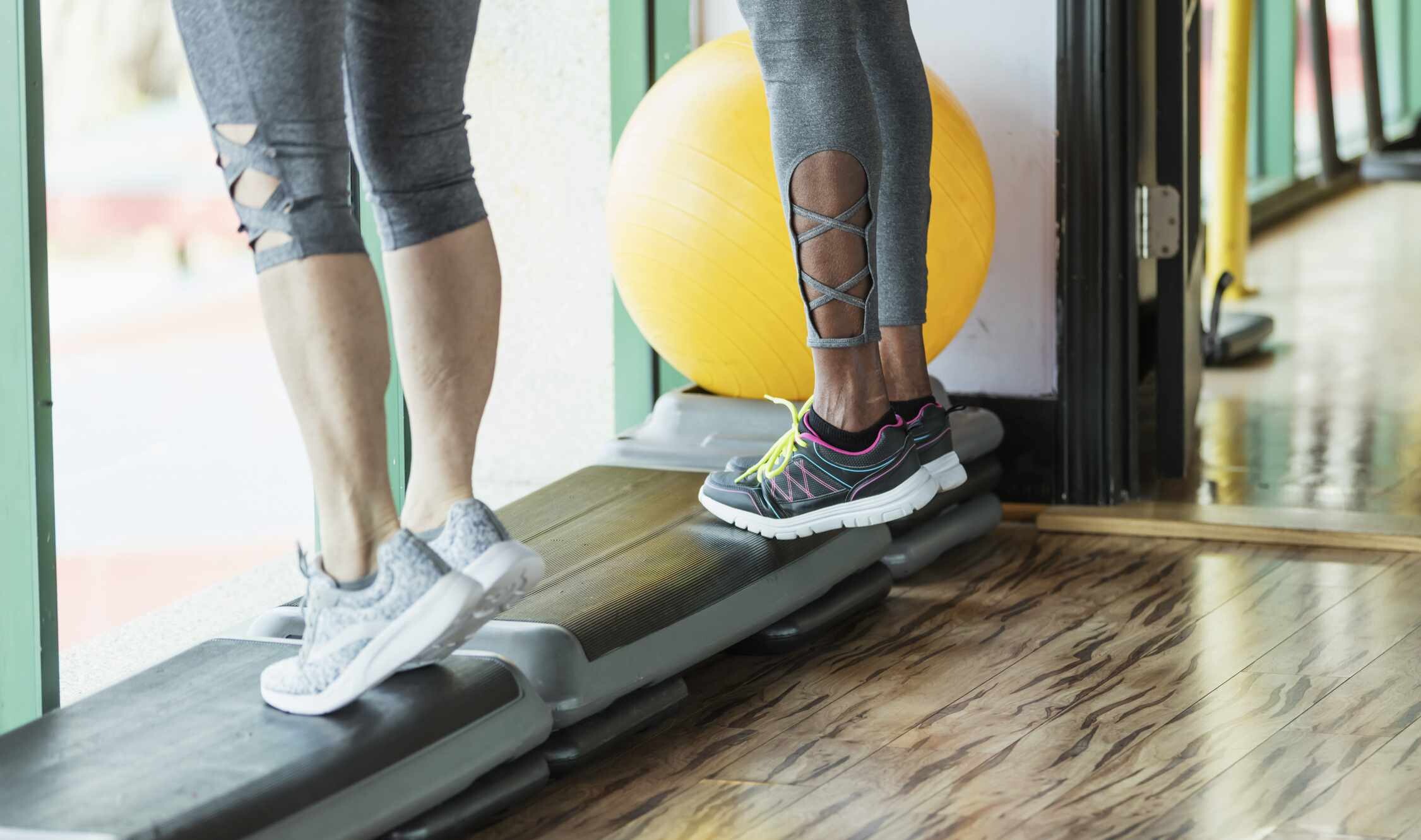
Squats are a wonderful way to target different muscles of your body, all of which aid in running. They are incredibly versatile, considering small movements like pointing your toes in a different direction can help you hit muscles you would not otherwise.
A wide-leg squat, toes pointing out, can help target the glutes, strengthen the hip muscles and provide a slight stretch to the inner thigh muscles. Whereas, a narrow leg squat really targets the quads and the lower back. Depending on your running goals, you can implement both stances, with or without weight, into your program to help build up the muscles that keep you strong and steady in your runs.
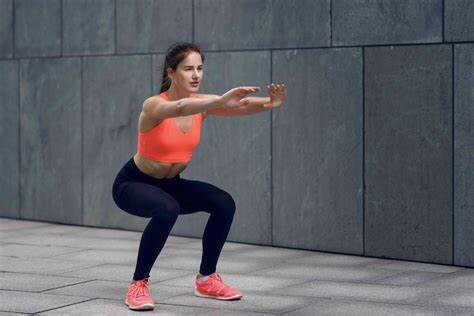
How to Perform:
Stand with your feet shoulder-width apart, hands clasped in front of you.
Lower your body down, sending your hips back as if you were sitting down into a chair until your knees are at a ninety-degree angle.
Keep your back in a neutral position and push back up into a standing position.
Works: quads, glutes, hamstrings, calves
2. Calf Raises
Calf raises are super simple, but they work as one of the muscle groups that are absolutely essential to successful runs. Your calf muscles are what push you forward and provide power in your stride.
To make them harder, do single-leg calf raises. This isolation will help you gain both stability and strength in your leg muscles. Alternatively, you can add some weight in the form of dumbbells or a barbell to make the exercise a little more challenging.
How to Perform:
Standing with both feet flat on the ground and about hip-width apart.
Raise yourself slowly up onto your toes and back down again.
Works: calves, feet, achilles, improve lower leg stability
3. Bulgarian Split Squats
Standing about three feet in front of a chair or something similar in height, lift one leg up behind you, resting the top of your foot on the raised platform. Lower down until your front knee is roughly ninety degrees, or until the stretch gets uncomfortable.
Bulgarians squats do two really great things for runners: they build up the stability muscles around the knee and hips, while simultaneously providing a stretch for the opposite leg. It is no secret that many of us forget or neglect our stretches, but this exercise provides the double whammy we are all looking for; strength training and stretching all in one.
How to Perform:
Standing about 2-3 feet in front of a chair or something similar in height.
Place your feet about hip-width apart.
Lift one leg up behind you and rest the top of your foot on the raised platform.
Lower down until your front knee is roughly ninety degrees, or until the stretch gets uncomfortable. Keep your chest high and head up throughout the movement.
Push back to standing.
Works: quads, glutes, hamstrings, calves. Improve balance and coordination
4. Jump Squats
Jump squats are a great addition to any runner’s routine because they, like Bulgarian squats, provide two different ways to build up those running muscles. Jump squats recruit your stabilizing muscles when you touch back down, while also requiring a little extra power to take off.
Bodyweight training that requires fast movements forces your body to work in a slightly different way and mimics the way your stabilizing muscles react during a run. These types of exercises result in not only increasing the speed and length of your run but agility in other areas of your life as well.
How to Perform:
Stand with your feet shoulder-width apart, hands clasped in front of you.
Lower your body down, sending your hips back as if you were sitting down into a chair until your knees are at a ninety-degree angle.
Keep your back in a neutral position.
Propel yourself from the ground, jumping as high as you can, and landing back in your starting position.
Works: Build explosive power in glutes, raise heart rate, and strengthen quads.
5. Reverse Lunges
Reverse lunges put less stress on your joints and give you a bit more stability in your front leg as you perform the exercise. This is the perfect alternative to forward lunges for runners who have knee concerns, difficulty balancing, or less hip mobility.
How to Perform:
Stand tall with feet shoulder-width apart and hands at your hips or overhead.
Take a large step back so your front knee is directly over your ankle.
Lower your hips to bring your front quad parallel to the floor.
Push forward with your back leg to return to the starting position.
Switch legs.
Works: glutes, hamstrings, and core with less stress on joints than a forward lunge.
6. Single Leg Deadlifts
Single-leg deadlifts will develop strength, balance, and posture. Once you get your balance down, you can perform this exercise with a lightweight kettlebell or dumbbell for some extra resistance. Like most single-leg activities, you’ll notice an increased activation of your glutes to help you to maintain your balance.
How to Perform:
Stand upright and hands down at your sides.
Lift one foot off the ground and keep the knee on your standing left slightly bent.
Begin leaning forward by hinging your whole body at the hip.
Lower your head and chest toward the floor as your foot comes up behind you.
Keeping your head, shoulder, hip, and ankle in a straight line.
Works: back, core, hamstrings.
Conclusion on the Best Leg Exercises for Runners
There is no reason to shy away from training legs when you are a runner. A regular lower body training program can add speed and endurance to your runs that you would not otherwise get. It protects against injury and ensures that you are continually hitting your running goals, whether you are hoping to run faster, longer, or safer.
(09/13/24) Views: 105Sunrise Running Company
Malaysian woman attacked by gang of otters on morning run
A woman’s routine morning jog in Sabah, Malaysia, took a terrifying turn when a gang of otters attacked her. Mariasella Harun was running through Tanjung Aru Recreation Park at 6 a.m. on Wednesday when she was reportedly surrounded by eight otters aggressively searching for food. At first glance, Harun mistook the group of otters for cats and continued her run. The water weasel octet then attacked her and fled the scene on foot.
Graphic footage from the incident shows Harun sitting on a curb in distress with wounds on her legs, arms and head. She was transported to a hospital for treatment, and local wildlife teams were deployed to monitor the otters’ activity in the area.


The teams found the otters likely entered the park to forage, and their altered behaviour could have been triggered by human interaction, such as feeding in the park’s pond. According to the Malaysian Wildlife Authority, this is the first reported attack by these creatures in the city. They plan to reinforce the park’s fence to prevent future attacks, urging visitors to avoid contact with the animals and maintain a safe distance from wildlife.
On Thursday, the mayor of the city of Sabah announced the closure of the park until further notice. While attacks of this nature are rare, the public has been advised to be cautious and refrain from feeding wild animals. The animals, related to wolverines and honey badgers, can display aggressive tendencies when provoked or threatened. Officials plan to monitor the park over the next week to mitigate the risk of future encounters with the otters.
(09/14/24) Views: 102Evans Chebet has plans to reclaim his New York City marathon
Evans Chebet has made his intentions clear ahead of his return to the Big Apple on Sunday, November 3.
Two-time Boston Marathon champion Evans Chebet has plans to reclaim his New York City marathon title as he goes up against a stacked field on Sunday, November 3.
Chebet was forced to withdraw from last year’s edition of the race due to an injury hence he could not defend his title. Reigning Olympic champion Tamirat Tola claimed the title but the Kenyan long-distance ace will return to take what rightfully belongs to him.
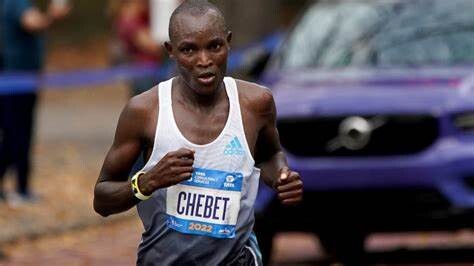
After missing the Paris Olympic Games, Chebet is hoping to end his season on a high, racing in the streets of New York City. He won the title at the 2022 New York City where he debuted in the streets of the Big Apple. As reported by The Star, Chebet expressed eagerness to return to one of his favourite courses with eyes on the prize.
“I was keeping my cards close so as not to reveal anything to my competitors. My resolve to reclaim the New York title is still on course and I am confident,” Chebet said.
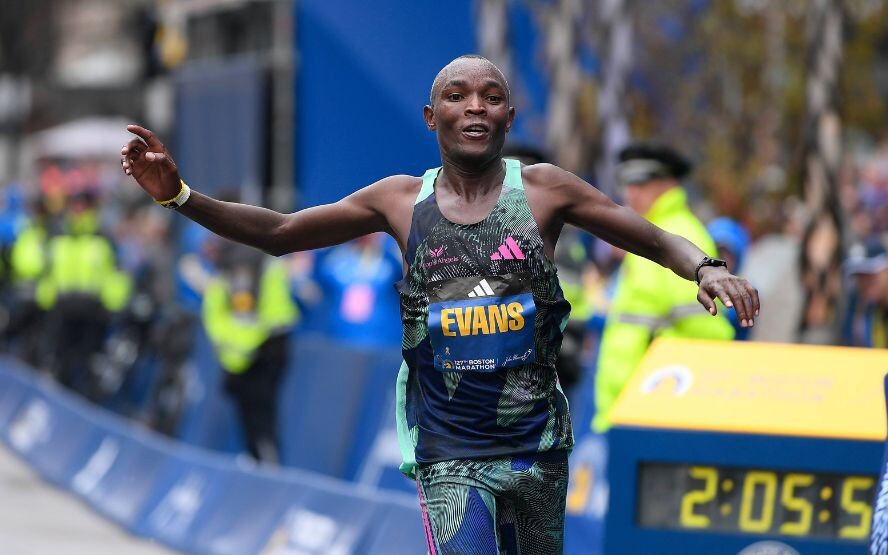
He disclosed that he is now injury free and ready to rumble as he gears up for the gruelling task against his opponents. Tola, who is still basking in Olympic glory will be Chebet’s greatest challenger in the race.
Belgium’s Bashir Abdi has also entered the race and he will be out to end his season on a high. Abdi won a silver medal in the Paris 2024 Olympic marathon. The 2021 champion of the New York City Marathon Albert Korir will also be in the mix to reclaim his title.
The 2019 and 2017 champion Geoffrey Kamworor who has raced sparingly this season has also confirmed to be lining up for the race. The 2024 United Airlines NYC Half champion Abel Kipchumba who is fresh from winning the Great North Run will also be lining up.
“This was my first race after my injury. I have now fully recovered and my body is now up to the task,” he said.
Chebet added that after the New York City Marathon, he will not be resting for long as he will start training for the Boston Marathon with plans to win his third title. The 35-year-old expressed his desire to compete in the marathon at the 2025 World Championships in Tokyo.
“After New York, I will start preparing for next year’s Boston Marathon, where I am looking to win a third title. If I make the qualifying time and make Team Kenya for the World Championships, I will be happy to participate and fight for the title,” he added.
(09/13/24) Views: 101Abigael Wafula


